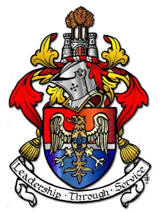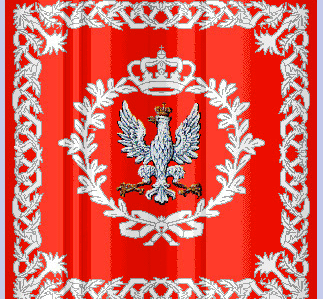| Royal Ancestors from Poland |
|
|
Royal Ancestors from Poland INTRODUCTION The Poles possess one of the richest and most venerable historical traditions of all European peoples. Convection fixes the origins of Poland as a nation near the middle of the tenth century, contemporaneous with the Carolingians, Vikings, and Saracens, and a full hundred years before the Norman conquest of Britain in 1066. Throughout the subsequent centuries, the Poles managed despite great obstacles to build an maintain an unbroken cultural heritage. The same cannot be said of Polish statehood, which was notoriously precarious and episodic. Periods of independence and prosperity alternated with phases of foreign domination and disaster. Many foreign observers perceive Poland as a perennial victim of history, whose survival through perseverance and a dogged sense of national identity has left a mixed legacy of indomitable courage and intolerance toward outsiders. To Poles, their history includes brighter recollections of Poland as a highly cultured kingdom, uniquely indulgent of ethnic and religious diversity and precociously supportive of human liberty and the fundamental values of Western civilization. The contrast between these images reflects the extremes of fortune experienced by Poland. The two visions of history combine in uneasy coexistence in the Polish consciousness. One striking feature of Polish culture is its fascination with the national past; the unusual variety and intensity of that past defy tidy conclusions and produce energetic debate among Poles themselves on the meaning of their history. In the first centuries of its existence, the Polish nation was led by a series of strong rulers who converted the Poles to Christianity, created a strong Central European state, and integrated Poland into European culture. Formidable foreign enemies and internal fragmentation eroded this initial structure in the thirteenth century, but consolidation in the 1300s laid the base for the dominant Polish Kingdom that was to follow. According to Polish myth, the Slavic nations trace their ancestry to three brothers who parted in the forests of Eastern Europe, each moving in a different direction to found a family of distinct but related peoples. Fanciful elements aside, this tale accurately describes the westward migration and gradual differentiation of the early West Slavic tribes following the collapse of the Roman Empire. About twenty such tribes formed small states between AD 800 and 960. One of these tribes, the Polanie or Poliane (“people of the plain”), settled in the flatlands that eventually formed the heart of Poland, lending their name to the country. Over time the modern Poles emerged as the largest of the West Slavic groupings, establishing themselves to the east of the Germanic regions of Europe with the ethnographic cousins, the Czechs and Slovaks, to the south. In spite of convincing fragmentary evidence of prior political and social organization, national custom identifies the starting date of Polish history as 966, when Prince Mieszko (r. 963-992) accepted Christianity in the name of the people he ruled. In return, Poland received acknowledgement as a separate principality owing some degree of tribute to the German Empire. Under Otto I, the German Empire was an expansionist force to the West in the mid-tenth century. Mieszko accepted baptism directly from Rome in preference to conversion by the German church and subsequent annexation of Poland by the German Empire. This strategy inaugurated the intimate connection between the Polish national identity and Roman Catholicism that became a prominent theme in the history of the Poles. Mieszko is considered the first ruler of the Piast Dynasty (named for the legendary peasant founder of the family), which endured for four centuries. Between 967 and 990, Mieszko conquered substantial territory along the Baltic Sea and in the region known as Little Poland to the south. By the time he officially submitted to the authority of the Holy See in Rome in 990, Mieszko had transformed the country into one of the strongest powers in Eastern Europe. Mieszko’s son and successor Boleslaw I (r. 992-1025), known as the Brave, built on his father’s achievements and became one of the most successful Polish monarchs of the early medieval era. Boleslaw continued the policy of appeasing the Germans while taking advantage of their political situation to gain territory wherever possible. Frustrated in his efforts to form an equal partnership with the Holy Roman Empire, Boleslaw gained some non-Polish territory in a series of wars against his imperial overlord in 1003 and 1004. The Polish conqueror then turned eastward, extending the boundaries of his realm into present-day Ukraine. Shortly before his death in 1025, Boleslaw won international recognition as the first king of a fully sovereign Poland. During the eleventh century and the first half of the twelfth century, the building of the Polish state continued under a series of successors to Boleslaw I. But by 1150, the state had been divided among the sons of Boleslaw III, beginning two centuries of fragmentation that brought Poland to the brink of dissolution. The most fabled event of this period was the murder in 1079 of Stanislaw, the bishop of Krakow. A participant in uprisings by the aristocracy against King Boleslaw II, Stanislaw was killed by order of the king. This incident led to open rebellion and ended the reign of Boleslaw. During this same period, Poland lost ground in its complex triangular relationship with the German Empire to the west and the kingdom of Bohemia to the south. New foreign enemies appeared by the thirteenth century. The Mongol invasion cut a swath of destruction through the country in 1241; for fifty years after their withdrawal in 1242, Mongol nomads mounted devastating raids into Poland from bases in Ruthenia to the southeast. Meanwhile, an even more dangerous foe arrived in 1225 when a Polish duke invited the Teutonic Knights, a German crusading order, to help him subdue Baltic pagan tribes. Upon completing their mission with the characteristic fierceness and efficiency, the knights built a stronghold on the Baltic seacoast, from which they sought to enlarge their holdings at Polish expense. By that time, the Piasts had been parceling out the realm into ever smaller units for nearly 100 years. This policy of division, initiated by Boleslaw II to appease separatist provinces while maintaining national unity, led to regional governance by various branches of the dynasty and to a near breakdown of cohesiveness in the face of foreign aggression. As the fourteenth century opened, much of Polish land lay under foreign occupation. In the fourteenth century, after a long period of instability and growing menace from without, the Polish state experienced a half century of recovery under the last monarch of the house of Piast. By 1320 Wladyslaw “The Short”, had manipulated internal and foreign alignments and reunited enough territory to win acceptance abroad as king of an independent Poland. His son Casimir III would become the only Polish king to gain the sobriquet “great.”
Poland
|

